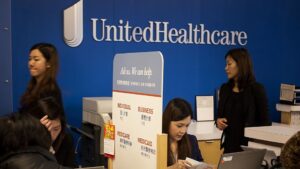UnitedHealthcare Offers Buyouts Amidst Organizational Changes
A Look Inside the Changes at UnitedHealthcare
In an unexpected turn of events, UnitedHealthcare, the largest private health insurer in the United States, has initiated a voluntary buyout program aimed at employees in its benefits operations unit. This move comes on the heels of a challenging year for the insurance giant, raising questions about the future of its workforce and the company’s direction.
What You Need to Know About the Buyout Program
According to internal sources, eligible employees have until March 3 to accept buyout offers under the newly implemented Voluntary Resignation Separation Program. Those who opt not to take the buyout will retain their current positions or be shifted to comparable roles. However, if the company does not reach its resignation quota through this program, layoffs may follow.
While the exact number of buyout offers remains undisclosed, employees from multiple subdivisions within the benefits operations unit—including customer service, claims management, enrollment, and insurance benefits oversight—are affected. This department plays a crucial role in UnitedHealthcare’s day-to-day operations, amplifying the implications of these changes.
Understanding UnitedHealth Group’s Current Landscape
UnitedHealth Group, the parent company of UnitedHealthcare, boasts a staggering market cap of approximately $460 billion and employs over 440,000 individuals. The company’s insurance division is witnessing the convergence of various pressures: soaring medical expenses for Medicare Advantage beneficiaries, the fallout from a recent cyber attack that compromised the data of millions, and the tragic loss of its insurance unit CEO, Brian Thompson.
Amid these challenges, UnitedHealth Group has voiced a commitment to reducing costs while simultaneously addressing heightened scrutiny over escalating healthcare fees.
Employee Impact and Organizational Goals
Eligible employees include both full-time and part-time workers across four internal segments, ranging from corporate to provider services. The company is keen on ensuring that its workforce is optimized to meet the evolving needs of its clientele, as reflected in an official statement emphasizing their commitment to growth—the company currently lists over 3,200 available positions.
Severance Packages and Future Prospects
Employees who accept the buyout will receive severance packages tailored to their years of service and salary-grade level. Notably, these benefits may not be as generous as those available to workers who are laid off in the future. This has left many recipients of the buyout offers feeling uneasy, particularly in light of UnitedHealthcare’s record-breaking revenue of $400.3 billion in 2024, marking an 8% increase from the previous year.
The Bigger Picture: Digital Transformation and Leadership Changes
During recent earnings calls, UnitedHealth executives have discussed their "modernization agenda," highlighting their focus on digital transformation as a means of cost reduction. CEO Andrew Witty described this transformation, driven by advanced technologies such as artificial intelligence, as a pivotal shift for the company.
Despite the challenges posed by external circumstances—including a significant cyber attack that impacted Change Healthcare—UnitedHealth Group remains optimistic about its trajectory.
Concluding Thoughts
As UnitedHealthcare navigates through these tumultuous waters, employees and stakeholders alike are left speculating about the long-term implications of these decisions. The company is poised to adapt and evolve, yet it remains to be seen how these buyouts will impact employee morale and public perception in an industry already facing intense scrutiny.
At Extreme Investor Network, we believe that understanding these organizational shifts is crucial for anyone invested in the healthcare sector. With the rise of digital technology and the imperative for healthcare reforms, the actions taken by giants like UnitedHealthcare will likely have ripple effects throughout the industry. Be sure to stay tuned to our updates for insights and analysis that can help guide your investment decisions in this dynamic market.

